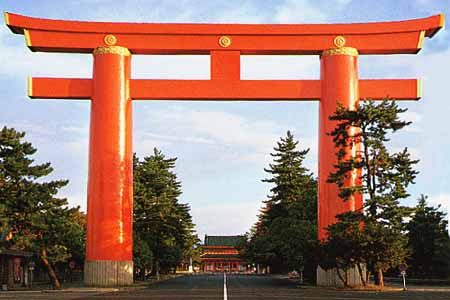Miyazaki, Shintoism & Ecology
Commencing yesterday and running through the 30th of this month, New York's Museum of Modern Art presents Hayao Miyazaki and Isao Takahata: Masters of Animation. The retrospective's centerpiece will be the North American premiere of Howl's Moving Castle (2004), Miyazaki's latest, which will subsequently receive a limited national release starting June 10th. (For Minneapolis readers, the film will open on that date at the Uptown Theatre.)
As no great fan of animation, let alone animae, I will admit that I think of Miyazaki as something of an exception. His best films manifest many of the same qualities as the very best of the classical Hollywood system: that is, they succeed in addressing multiple audiences at once, both as organic works of art and as entertainments in their own right. Spirited Away (2001), for instance, is targeted at ten year-old girls, seeking to remedy their principle anxieties, while operating as a parable for the economic crisis for older viewers. Then again, those not within the former demographic are likewise given a glimpse into the young female's psychoses. It is in other words an art that operates on numerous levels, separately addressing different viewers.



 Religion and Ecology
Religion and Ecology






